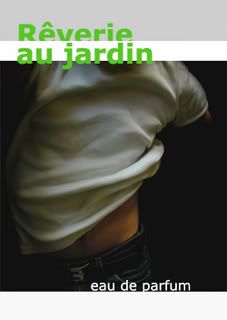 Perfume Shrine likes to look at new things and when a favourite brand branches out, here we are following the trail like a scenthound. Korres, the Greek skincare and makeup line that has taken the world by storm has launched a separate new body care line, named "For Kings and Queens".The idea behind it is to link specific royal persons with scents associated with their life and beliefs. Naturally, Perfume Shrine's interest was piqued!
Perfume Shrine likes to look at new things and when a favourite brand branches out, here we are following the trail like a scenthound. Korres, the Greek skincare and makeup line that has taken the world by storm has launched a separate new body care line, named "For Kings and Queens".The idea behind it is to link specific royal persons with scents associated with their life and beliefs. Naturally, Perfume Shrine's interest was piqued!Perusing the line there is a wealth of famous people inspiring shower gels and body creams. Beginning back in antiquity, Caspar is associated with Myrrh (it smells somptuous!), the fragrant gift of the Magi to baby Jesus, while Nefertiti takes her bath in Honey. Her name means "beautiful woman who has arrived" and it is inferred that her beauty rituals were complimentary to her loveliness.
Queen of Sheba inspired Pistachio (an unusual choice, don't you agree!) because she was so mad about its taste and aroma that she ordered the country's crops to be solely distributed to her Court.
King Solomon gave the inspiration for Cedar (a very smooth, austere yet sensual smell). The king of Israel, responsible for building the first Temple of Jerusalem used almost only cedar for its amazing properties of resisting decay and smelling fragrantly pious.
The exotics are well taken care of: King of Ceylon has a penchant for Cinnamon, a product accountable for the antagonism of the Dutch, British and Portuguese fighting over control of the island.
Indian Maharajas opt for Mahogany, a woody fragrance inspired by the reddish timber. The King of Sumatra is tied to Pepper and Bergamot : pepper was the most highly prized spice till well into the Middle Ages due to its admirable hot aroma that helped fight bacteria and repel insects which might tamper with food. In Sumatra black pepper has become the stuff of legend with pirates and colonialists fighting over loads of the black gem in merchant ships. The composition is complimented with a classical Mediterranean citrusy tang of bergamot.
Pre-Colombian Aztek Kings are catered for by a spicy Vanilla Pear blend which derives its popularity from its purpoted aphrodisiac properties, accounting for its extensive use among the kings and their wives (along with cocoa). The composition is complimented with a tinge of fresh pear.
Some unidentified Princess of China goes for Jasmine: that one predictably did have me sniffing and resniffing and the association is a particularly dreamy one: since jasmine is such a potent love potion for the mind that awakens feelings of love and passion, she had ordered her gardens to be solely planted with jasmine so that her lover would never forget his vows. A wonderful choice for spring and summer!
 Reverting to Europe, I really liked the aroma of Tobacco, associated with Tsar Peter the Great, who actually did favour the habit of smoking himself and encouraged it during his reign, despite the laws against it, since its introduction to Western Europe. The scent is deep with a hint of sweetness and a very subtle citrusy top. I bought this one on the spot, to layer with my leathery scents.
Reverting to Europe, I really liked the aroma of Tobacco, associated with Tsar Peter the Great, who actually did favour the habit of smoking himself and encouraged it during his reign, despite the laws against it, since its introduction to Western Europe. The scent is deep with a hint of sweetness and a very subtle citrusy top. I bought this one on the spot, to layer with my leathery scents.George the III, another European king is associated with Lime: the obscure reason is not tied to his particular preference for the fruit, but rather to his orders for sailors of the Royal Navy to consume lime juice along with their booze to help fight the most dangerous disease of sailors of the past: scurvy, a deficiency in vitamin C due to shortage of fresh produce in ships.
Orange quickly became the fruit of the aristocracy when it was brought back to Europe by Portuguese colonialists travelling to Southeast Asia, but there was no tester for me to get an idea how successful the rendition was.
Queen Isabella of Spain inspired the Cinnamon Orange shower gel and lotion, which marries the spicy taste of cinnamon to fresh orange blossom.
I really liked the Lemon Flower of the Sultans Nasrid of Granada: it reminded me of a warm summer walking in the city full of lemon trees and the cool evening breeze bringing the heavenly smell while passing by the Mauritanic Palace walls. This is my next buy, to layer with Fleurs de Citronnier by Serge Lutens!
The texture of Tobacco is more like liquid caramel and quite dark blackish brown (which is interesting!), somehow coming out in diaphanous big blobs out of the bottle. I don't know if this is characteristic of each and everyone of them though. Nevertheless, to their credit, they are all manufactured without mineral oil nor parabens.
The body butters and lotions come in 9 scents so far, with plans to include more. Some of them are shimmering lotions, such as Caspar Murrh and Chinese Princess Jasmine. While others are thicker, in a texture of body butter, such as Nefertiti Honey; or more runny like a body milk, such as George III Lime. All the products are enriched with Pomegranate, Blue Egyptian Lotus and Malachite (!) extracts.
The bottles are all enrobed in swirly pattenrs of contrasting colours with a different font for each one complimenting the historical trivia.
The prices are more than reasonable, making the line an everyday indulgence.
The official site is really well made with lots of wonderful trivia, a breakdown of the psychological types of everyday royalty (like the Scene Stealer, the Natural Performer or the City Nomad), cult personalities making a cameo appearence and everyday people asnwering questions about their personal kingdoms.
For our friends in the UK, some of them are available at Asos.com
You can email them with querries at: Atyourservice@forkingsandqueens.com
NEXT: a fun feature!! Check back shortly to see ;-)

.jpg)






